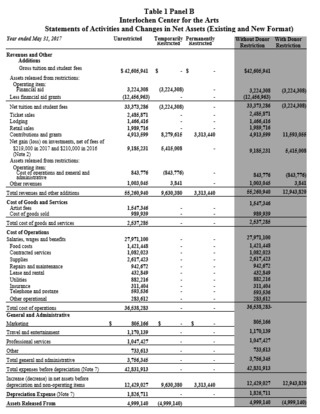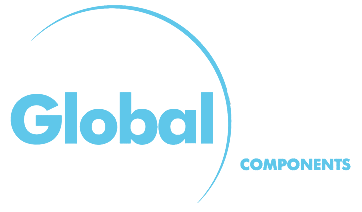
In the period end BALANCE SHEET, such an asset would be included at its cost less depreciation deducted to date. This depreciation charge does not attempt to calculate the reducing market value of fixed assets, so that balance sheets do not show realization values. The depreciated cost is the value of an asset after its useful life is complete, reduced over time through depreciation.

It splits an asset’s value equally over multiple years, meaning you pay the same amount for every year of the asset’s useful life. There are several methods for calculating depreciation, generally based on either the passage of time or the level of activity (or use) of the asset. For example, a business may buy or build an office building, and use it for many years. The cost of the building, minus its resale value, is spread out over the predicted life of the building, with a portion of the cost being expensed in each accounting year. As such, the company’s accountant does not have to expense the entire $50,000 in year one, even though the company paid out that amount in cash.
The fixed percentage is multiplied by the tax basis of assets in service to determine the capital allowance deduction. Capital allowance calculations may be based on the total set of assets, on sets or pools by year (vintage pools) or pools by classes of assets… Depreciation is thus the decrease in the value of assets and the method used to reallocate, or “write down” the cost of a tangible asset (such as equipment) over its useful life span. Businesses depreciate long-term assets for both accounting and tax purposes.
The earlier you can start planning for that purchase — perhaps by setting aside cash each month in a business savings account — the easier it will be to replace the equipment when the time comes. Find out what your annual and monthly depreciation expenses should be using the simplest straight-line method, as well as the three other methods, in the calculator below. Businesses also create accounting depreciation schedules with tax benefits in mind because depreciation on assets is deductible as a business expense in accordance with IRS rules.
Amortization vs. Depreciation: What’s the Difference?
The term ‘depreciate’ means to diminish something value over time, while the term ‘amortize’ means to gradually write off a cost over a period. Conceptually, depreciation is recorded to reflect that an asset is no longer worth the previous carrying cost reflected on the financial statements. Meanwhile, amortization is recorded to allocate costs over a specific period of time. Of the different options mentioned above, a company often has the option of accelerating depreciation.
- Depreciation is an accounting method used to demonstrate the expense of using a business asset over a certain period.
- As time passes, the value of any given asset decreases, and there needs to be a way for businesses to account for this loss in value.
- By definition, depreciation is only applicable to physical, tangible assets subject to having their costs allocated over their useful lives.
- This method requires an estimate of the total units an asset will produce over its useful life.
A single line providing the dollar amount of charges for the accounting period appears on the income statement. Businesses have some control over how they depreciate their assets over time. Good small-business accounting software lets you record depreciation, but the process will probably still require manual calculations. You’ll need to understand the ins and outs to choose the right depreciation method for your business. Amortization is an accounting term that essentially depreciates intangible assets such as intellectual property or loan interest over time.
More meanings of depreciation
Depreciation stops when book value is equal to the scrap value of the asset. In the end, the sum of accumulated depreciation and scrap value equals the original cost. Suppose an asset has original cost $70,000, salvage value $10,000, and is expected to produce 6,000 units. An amortization schedule is often used to calculate a series of loan payments consisting of both principal and interest in each payment, as in the case of a mortgage. Though different, the concept is somewhat similar; as a loan is an intangible item, amortization is the reduction in the carrying value of the balance. Find the method that makes sense for your business’s assets (possibly with the assistance of an accountant) and make sure you are taking full advantage of this tax break.
It’s an accounting technique that enables businesses to recover the cost of fixed assets by deducting them from their profits. The double-declining balance (DDB) method is another accelerated depreciation method. After taking the reciprocal of the useful life of the asset and doubling it, this rate is applied to the depreciable base—its book value—for the remainder of the asset’s expected life. For example, an organization buys a truck for $50,000 and expects to use it for the next five years. Accordingly, the firm charges $10,000 to depreciation expense in each of those five years. This charging to expense in a consistent, even amount over time is called the straight-line method.
The total amount depreciated each year, which is represented as a percentage, is called the depreciation rate. For example, if a company had $100,000 in total depreciation over the asset’s expected life, and the annual depreciation was $15,000. Depreciation is considered a non-cash charge because it doesn’t represent an actual cash outflow. The entire cash outlay might be paid initially when an asset is purchased, but the expense is recorded incrementally for financial reporting purposes.
A percentage of the purchase price is deducted over the course of the asset’s useful life. In the case of property placed in service after December 31, 2022, and before January 1, 2024, the special depreciation allowance is 80 percent. This allowance is taken after any allowable Section 179 deduction and before any other depreciation is allowed.
Sum of the years’ digits depreciation
If the sales price is ever less than the book value, the resulting capital loss is tax-deductible. If the sale price were ever more than the original book value, then the gain above the original book value is recognized as a capital gain. Vehicles, equipment, office furniture, computer hardware, and real estate are the most common depreciable assets for small business owners. Accrual accounting permits companies to recognize capital expenses in periods that reflect the use of the related capital asset. In other words, it lets firms match expenses to the revenues they helped produce. Because you’ve taken the time to determine the useful life of your equipment for depreciation purposes, you can make an educated assumption about when the business will need to purchase new equipment.
Why is the Australian dollar falling so fast – and what does it mean? – The Guardian
Why is the Australian dollar falling so fast – and what does it mean?.
Posted: Sat, 19 Aug 2023 23:20:00 GMT [source]
If the same crane initially cost the company $50,000, then the total amount depreciated over its useful life is $45,000. The group depreciation method is used for depreciating multiple-asset accounts using a similar depreciation method. The assets must be similar in nature and have approximately the same Meaning of depreciation useful lives. If the vehicle were to be sold and the sales price exceeded the depreciated value (net book value) then the excess would be considered a gain and subject to depreciation recapture. In addition, this gain above the depreciated value would be recognized as ordinary income by the tax office.
Why Are Assets Depreciated Over Time?
Depreciation is technically a method of allocation, not valuation,[4] even though it determines the value placed on the asset in the balance sheet. The depreciation rate for something such as a car will decrease every year because the car loses value with time and driving use. You can comp some of the cost of the initial purchase and maintenance of the vehicle by reporting it as a “depreciable asset” on your business taxes. If a company uses all three of the above expensing methods, they will be recorded in its financial statement as depreciation, depletion, and amortization (DD&A).
The depreciated cost can be examined for trends in a company’s capital spending and how aggressive their accounting methods are, seen through how accurately they calculate depreciation. Some systems specify lives based on classes of property defined by the tax authority. Canada Revenue Agency specifies numerous classes based on the type of property and how it is used. Under the United States depreciation system, the Internal Revenue Service publishes a detailed guide which includes a table of asset lives and the applicable conventions. The table also incorporates specified lives for certain commonly used assets (e.g., office furniture, computers, automobiles) which override the business use lives.
Rules vary highly by country, and may vary within a country based on the type of asset or type of taxpayer. Many systems that specify depreciation lives and methods for financial reporting require the same lives and methods be used for tax purposes. Most tax systems provide different rules for real property (buildings, etc.) and personal property (equipment, etc.). Methods of computing depreciation, and the periods over which assets are depreciated, may vary between asset types within the same business and may vary for tax purposes. These may be specified by law or accounting standards, which may vary by country. There are several standard methods of computing depreciation expense, including fixed percentage, straight line, and declining balance methods.
The recognition of depreciation expense is unrelated to cash flows, so it is considered a noncash expense. Instead, the only cash flows related to a fixed asset are when it is acquired and when it is eventually sold. Depreciation formulas base the depreciation charge on the HISTORIC COST of fixed assets. During a period of INFLATION, however, it is likely that the REPLACEMENT COST of an asset is likely to be higher than its original cost.
The salvage value is typically set at a percentage slightly less than the original cost, and may vary depending on the type and condition of the depreciable asset. Depreciation is used to reduce the amount of income that is subject to tax, but it can’t be deducted in the year the asset was purchased. Analysts and investors in the energy sector should be aware of this expense and how it relates to cash flow and capital expenditure. Units of production depreciation is based on how many items a piece of equipment can produce.
How does deprecation affect tax liability?
In theory, more expense should be expensed during this time because newer assets are more efficient and more in use than older assets. As time passes, the value of any given asset decreases, and there needs to be a way for businesses to account for this loss in value. Depreciation is the process of allocating and claiming a tangible asset’s cost each financial year that is spread over its predicted economic life. Small business owners can use depreciation to recoup some of the cost of an asset over its lifespan. Depreciation is an accounting means of dividing up the historic cost of a FIXED ASSET over a number of accounting periods that correspond with the asset’s estimated life. The depreciation charged against the revenue of successive time periods in the PROFIT-AND-LOSS ACCOUNT serves to spread the original cost of a fixed asset, which yields benefits to the firm over several trading periods.
Half year results for the six months ended 30 June 2023 – Wood Group
Half year results for the six months ended 30 June 2023.
Posted: Tue, 22 Aug 2023 06:04:01 GMT [source]
Your business’s depreciation expense reduces the earnings on which your taxes are based, reducing the taxes your business owes the IRS. This method, also called declining balance depreciation, allows you to write off more of an asset’s value right after you purchase it and less as time goes by. This is a good option for businesses that want to recover more of the asset’s value upfront rather than waiting a certain number of years, such as small businesses with a lot of initial costs and requiring extra cash. In determining the net income (profits) from an activity, the receipts from the activity must be reduced by appropriate costs. Depreciation is any method of allocating such net cost to those periods in which the organization is expected to benefit from the use of the asset. Depreciation is a process of deducting the cost of an asset over its useful life.[3] Assets are sorted into different classes and each has its own useful life.
